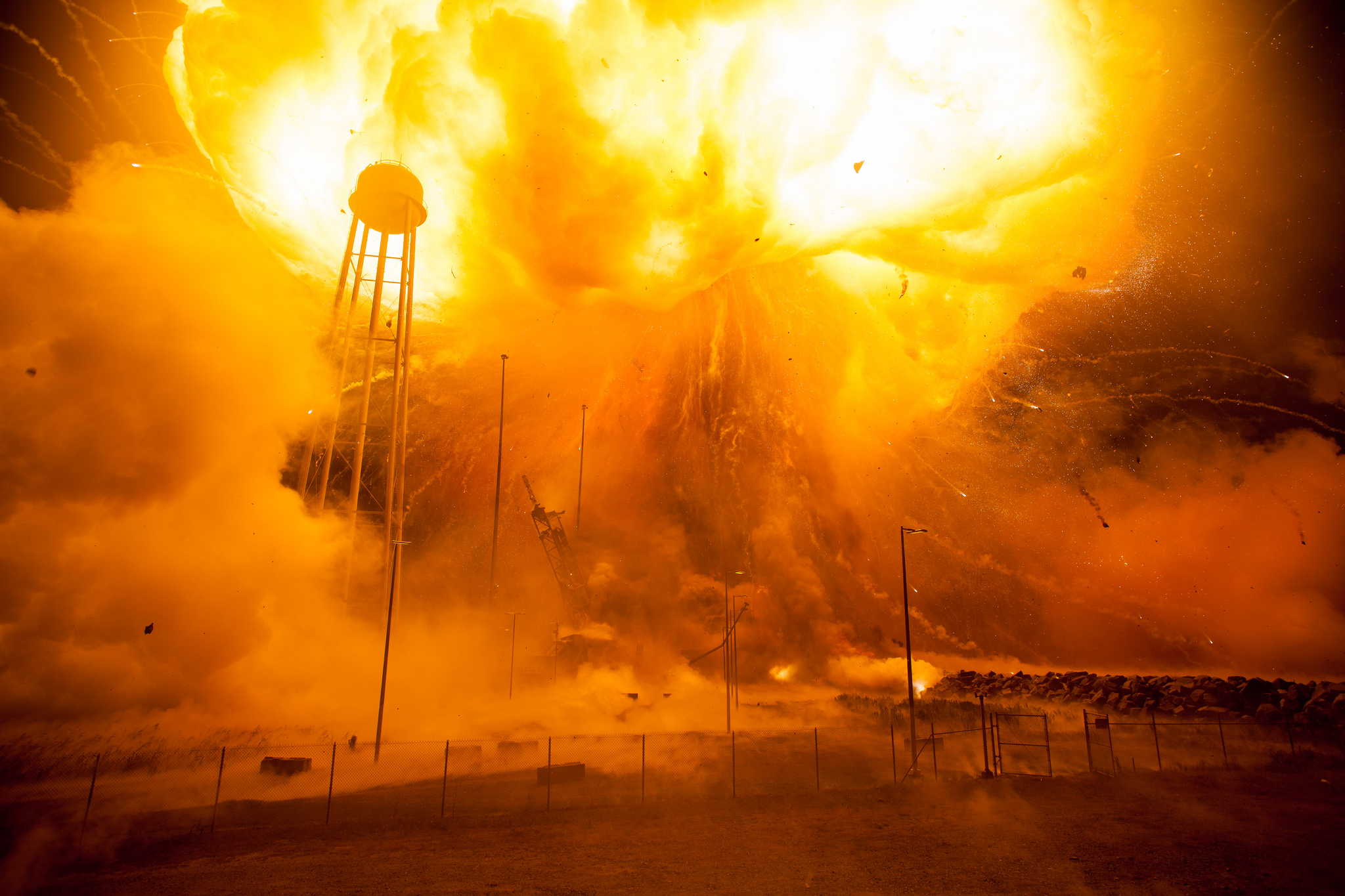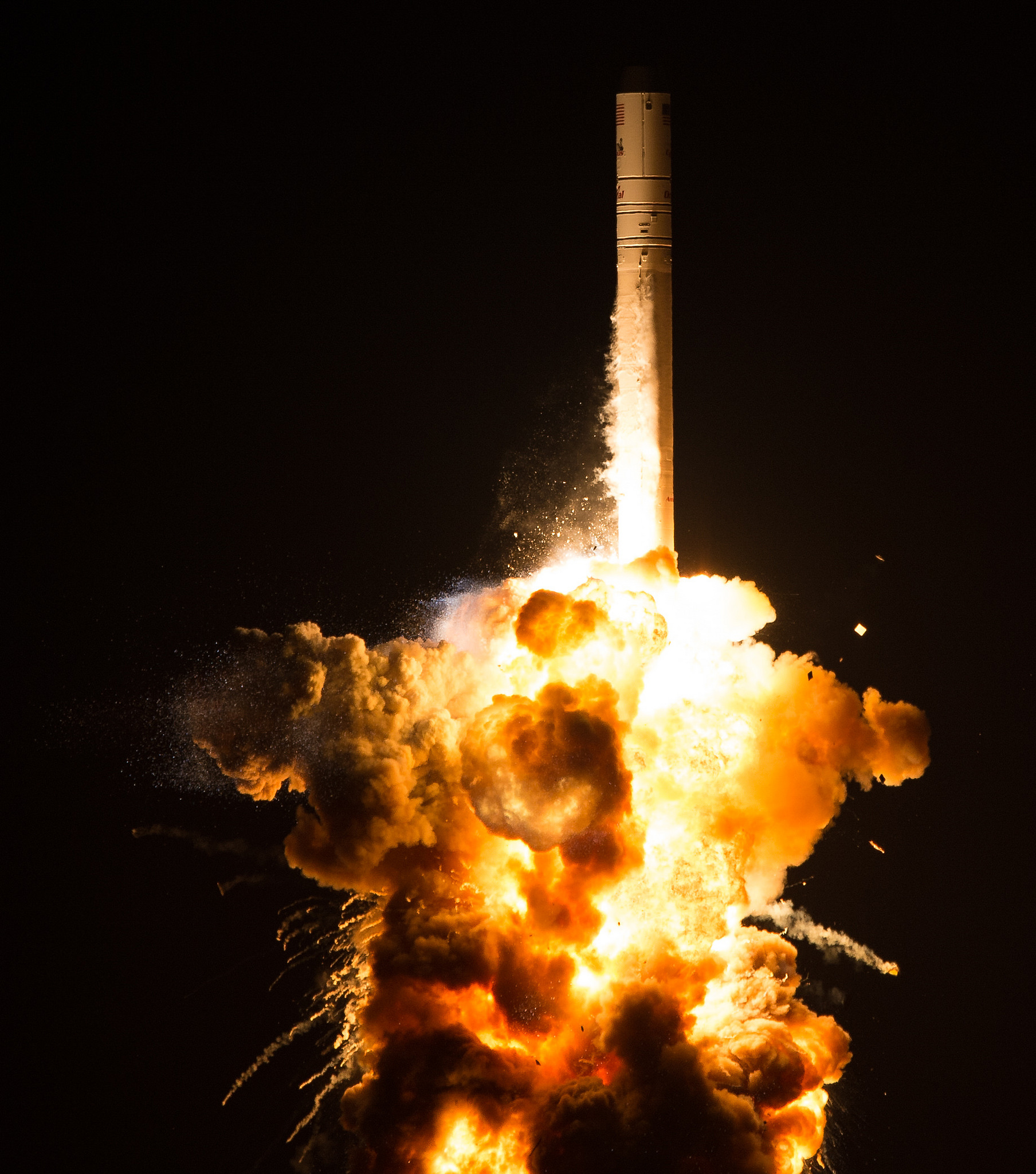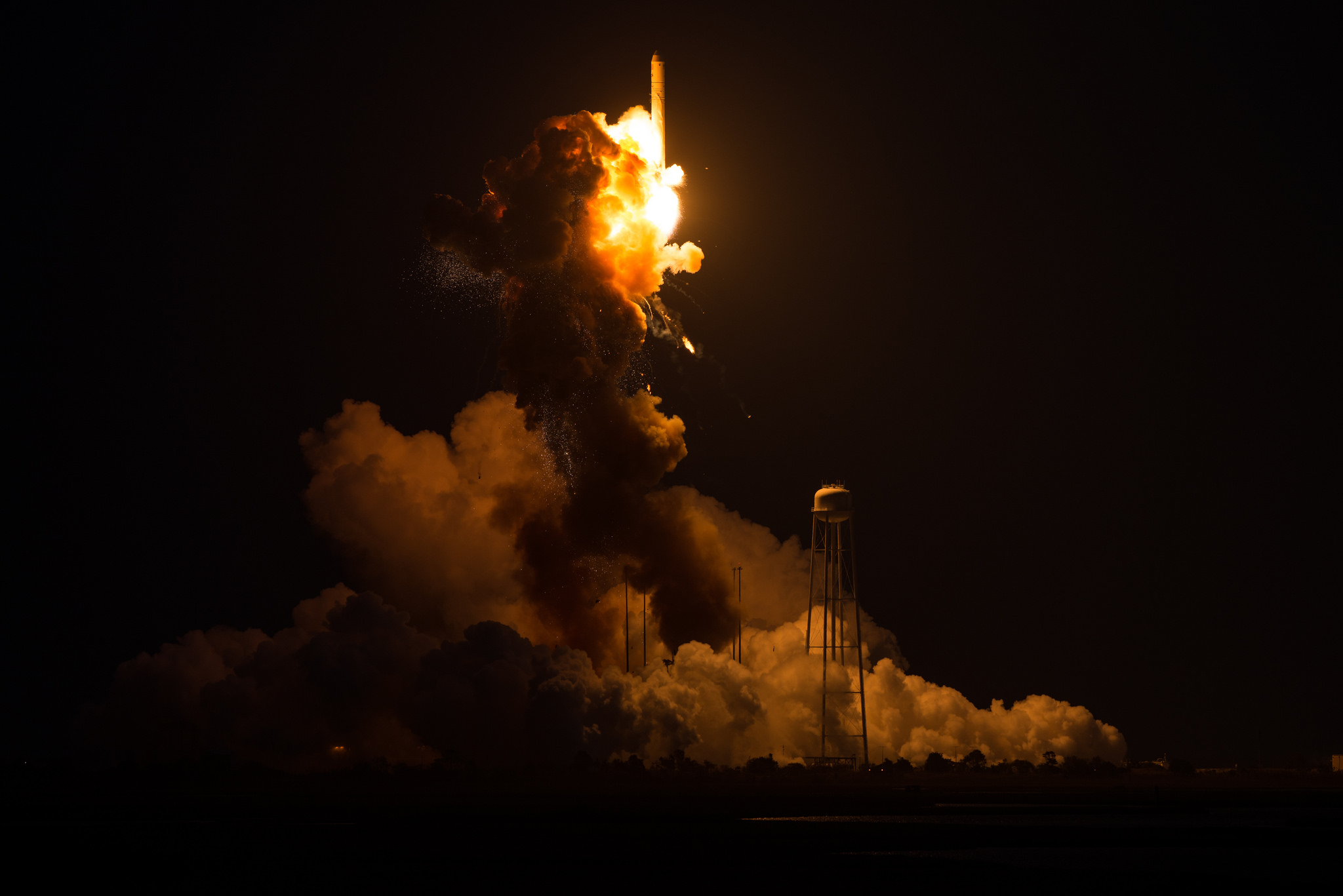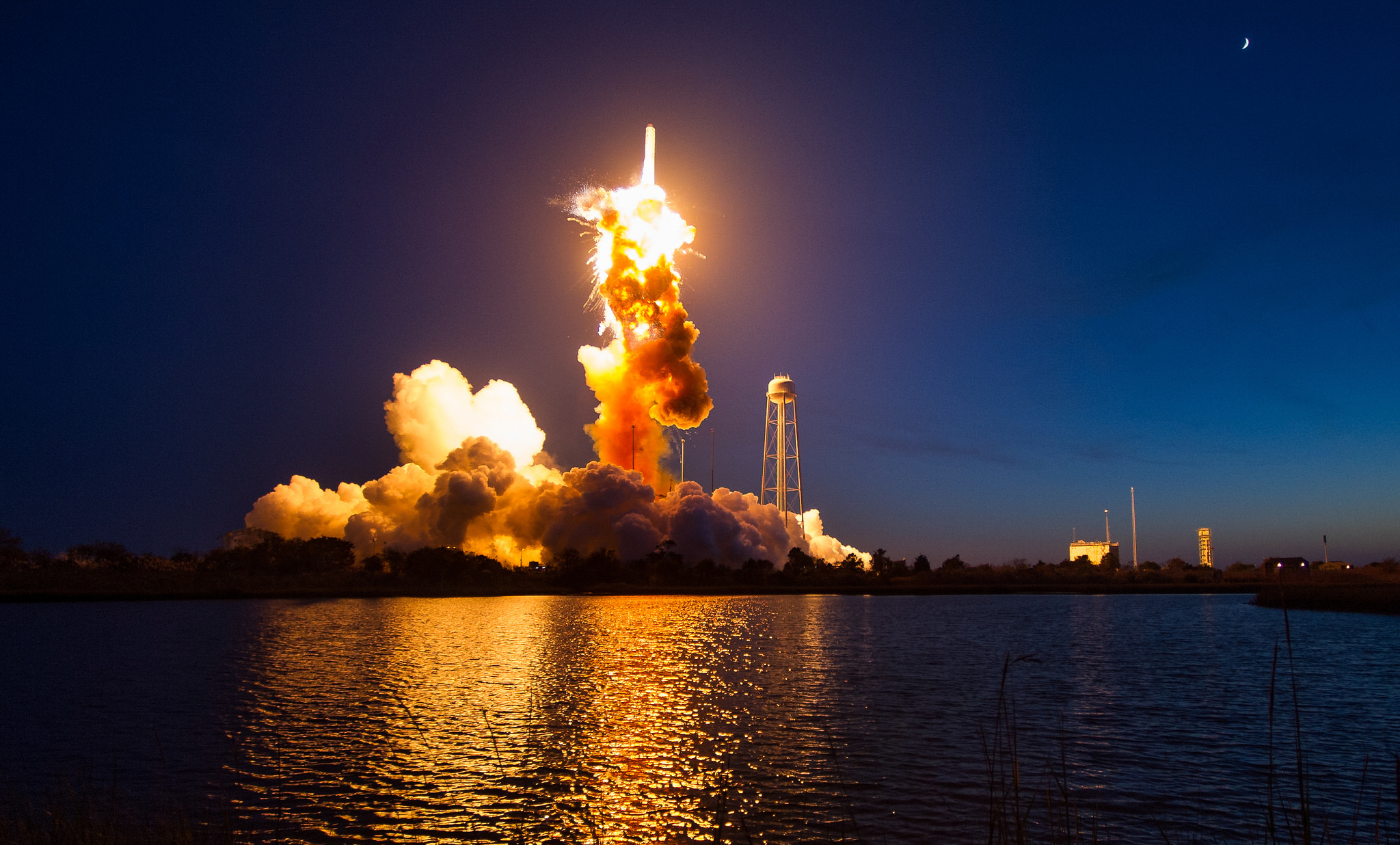
A series of newly released photos shows last year's explosion of a private cargo-carrying rocket in dramatic detail.
Orbital Sciences' Antares rocket exploded just seconds after lifting off from NASA's Wallops Flight Facility in Virginia on Oct. 28, 2014, scuttling the company's third robotic resupply mission to the International Space Station. The accident caused no injuries. (Orbital Sciences merged with parts of Alliant Techsystems to form the new company Orbital ATK earlier this year.)
According to SpaceNews, NASA has posted new images to a 39-photo gallery of the ill-fated Antares launch on its Flickr page — just a week or so after the agency released the results of its investigation into the failure. (NASA and Orbital ATK both determined that the explosion was caused by a problem with the turbopump in one of the Antares' two first-stage AJ-26 engines.)
You can see all of the images at NASA HQ's Flickr page. While NASA released some photos just after the Antares rocket explosion in 2014, the newly released images - which like the earlier ones were taken by NASA photographer Joel Kowsky - show dramatic views of the explosion, including the intense fireball it spawned at the Antares launchpad.

Orbital ATK holds a $1.9 billion NASA contract to launch eight uncrewed cargo missions to the space station using Antares and the company's Cygnus freighter. The first two of these flights went well.
The next Cygnus mission is scheduled to launch on Dec. 3 atop a United Launch Alliance Atlas V rocket, which Virginia-based Orbital will use until a retooled version of Antares that swaps out the AJ-26 engines for Russian-made RD-181s is ready to go. That should happen in spring 2016, Orbital representatives have said.
Get the Space.com Newsletter
Breaking space news, the latest updates on rocket launches, skywatching events and more!

The AJ-26, incidentally, also has Russian heritage; it's a refurbished variant of the NK-33 engine, which the Soviet Union built for its N1 moon rocket during the space race.
Orbital ATK isn't the only American spaceflight company with a NASA cargo contract. California-based SpaceX is getting $1.6 billion to fly at least 12 missions to the orbiting lab using its Falcon 9 rocket and robotic Dragon capsule.

SpaceX aced the first six of these flights, but number seven ended less than three minutes after liftoff on June 28 of this year when the Falcon 9 broke apart in the skies above Florida's Cape Canaveral Air Force Station. That mishap was caused by a faulty steel strut in the Falcon 9's upper stage, SpaceX CEO Elon Musk has said.
SpaceX plans to launch its next cargo mission to the International Space Station in early January.
Follow Mike Wall on Twitter @michaeldwall and Google+. Follow us @Spacedotcom, Facebook or Google+. Originally published on Space.com.
Join our Space Forums to keep talking space on the latest missions, night sky and more! And if you have a news tip, correction or comment, let us know at: community@space.com.

Michael Wall is a Senior Space Writer with Space.com and joined the team in 2010. He primarily covers exoplanets, spaceflight and military space, but has been known to dabble in the space art beat. His book about the search for alien life, "Out There," was published on Nov. 13, 2018. Before becoming a science writer, Michael worked as a herpetologist and wildlife biologist. He has a Ph.D. in evolutionary biology from the University of Sydney, Australia, a bachelor's degree from the University of Arizona, and a graduate certificate in science writing from the University of California, Santa Cruz. To find out what his latest project is, you can follow Michael on Twitter.









